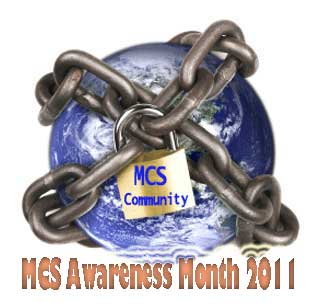Criminal proceedings terminated for accounting fraud against environmental physican
Neurologist agrees to a compromise settlement
The Trier Regional Court has closed the case against Dr. Peter Binz, however, the German neurologist and environmental physician must pay € 10,000 to the Treasury. The treasurer of the Trier Medical Association raised suspicions of accounting fraud which have not been confirmed. At a court hearing on April 6th, it was discovered that there was no intent or gross negligence by Dr. Binz. The payment of 10 000 € is to be understood as a proportional fee, and not as an admission of guilt. The adoption of the proposed settlement by the court, for the 70-year-old neurologist could not last another year-long of court proceedings. Dr. Binz agreed to a trial which has taken many years and professional time away from his patients, when the court initially said it would take about 60 court days to complete.
War against courageous doctors
The investigation of the Trier German doctor took six years. Dr. Binz, who always protested his innocence, gave accounting experts and all those who accused him, his documents of his expenses so the experts could double check the transactions. For him, the accusation of K. Trier, of cheating in 2800 cases, was not only pointless, but he saw it rather as a continuation of many years of persistent war against him. The KV Trier and the Medical Council were at war with Dr. Binz mainly because of his tireless and fearless commitment to workers who had been affected by chemicals in their workplace. Again and again the Medical Association and KV started attacks, which caused his patients’ suffering to increase. Dr. Binz was not swayed and stood steadfast for his patients, who were often too ill to defend themselves. About 600 of his patients were interrogated, as the opposition tried to gather evidence against the doctor.
Lawyer convinced of the innocence of his client
Binz’s lawyer, Hülsmann, was convinced that Binz would win the battle and the court would discharge his case. Dr. Binz’s lawyer said closing the case was the best solution because the process would have dragged on for many more years and Dr. Binz’s practice would have further suffered because the process would have taken place during the same time as his office hours. The age of Dr. Binz and his ailing health also played a role in the ultimate decision. Under no circumstances, however, is this case conclusion to be seen as an admission of guilt, which was also confirmed by the court. The prosecution had already argued in June 2010 on the matter. A settlement had not been prepared because Dr. Binz was of the assumption that this would be seen as an admission of guilt on his part.
Proceedings are terminated, final defeat for the KV
The 234-page indictment against Dr. Binz for billing fraud is now closed. The doctor who had to initially pay 184 000 €, in advance already has received 100 000 € back from the KV Trier. In a further decision, Dr. Binz would have to pay € 67,000, however, that was also removed.
For the KV Trier the decision is to be regarded as final in its long bitter struggle against their unpleasant doctor. Dr. .Binz’s case showed no gross evidence, intentional or gross negligence in billing for services, as similar accusations have also been attempted to destroy other professional colleagues.
A doctor with backbone
The war of nerves. Dr. Binz and his wife in the past decades and especially during the last six years, have never given up. They both showed great human strength during this false persecution, and instead of only focusing on themselves, they were primarily concerned about the disadvantaged patients whose medical records were seized and who were subjected to stressful interrogations.
During the interrogation of the CSN President as part of the investigations against Dr. Binz, a commissioner commented: “Oh no, Binz is under investigation for accounting fraud? How can this be calculated against this doctor? I visited Dr. Binz during a lawsuit years ago. I was then just curious about what kind of a man has no fear when big companies flex their muscles. Dr. Binz is an honest man, and I’m glad to have met him. We need more doctors like him. Then things would be different. If he has deceived someone, I will eat a broom. ”
The “broom” must not be eaten and those who have scientific evidence relating to health problems caused by toxic substances in the workplace must continue to practice and help those workers affected. In recent years that exactly confirms what this doctor in Trier has accomplished for decades with a great commitment.
Author: Silvia K. Müller, CSN – Chemical Sensitivity Network, 18 May 2011
Translation: Christi Howarth for CSN
Related articles:





